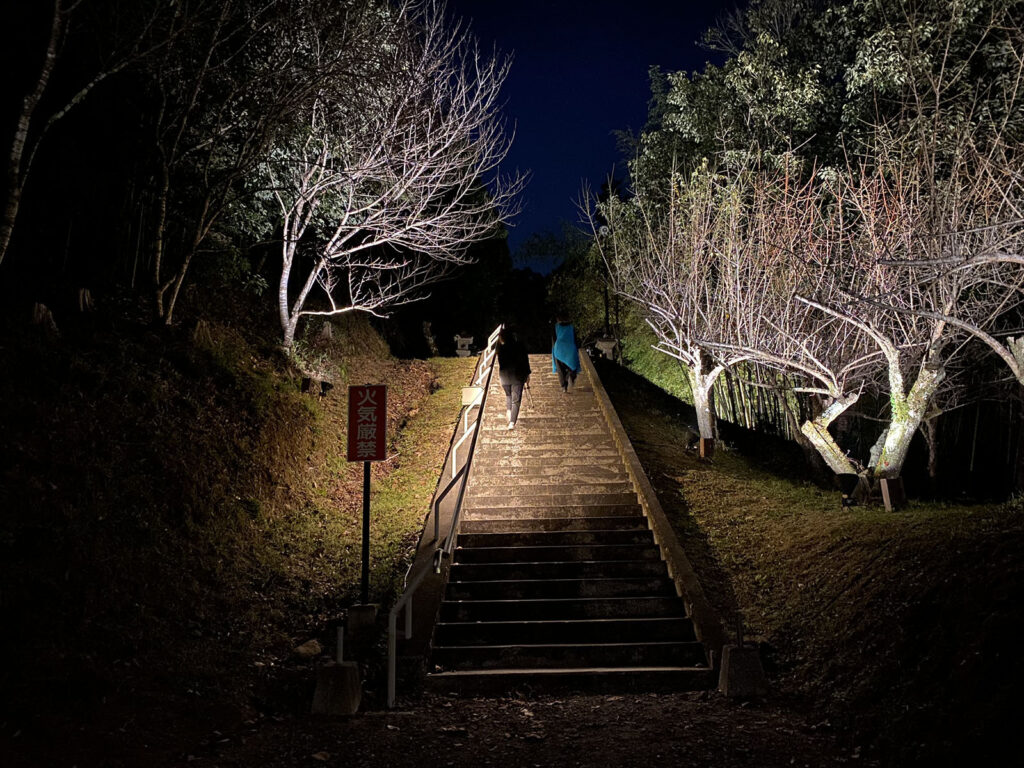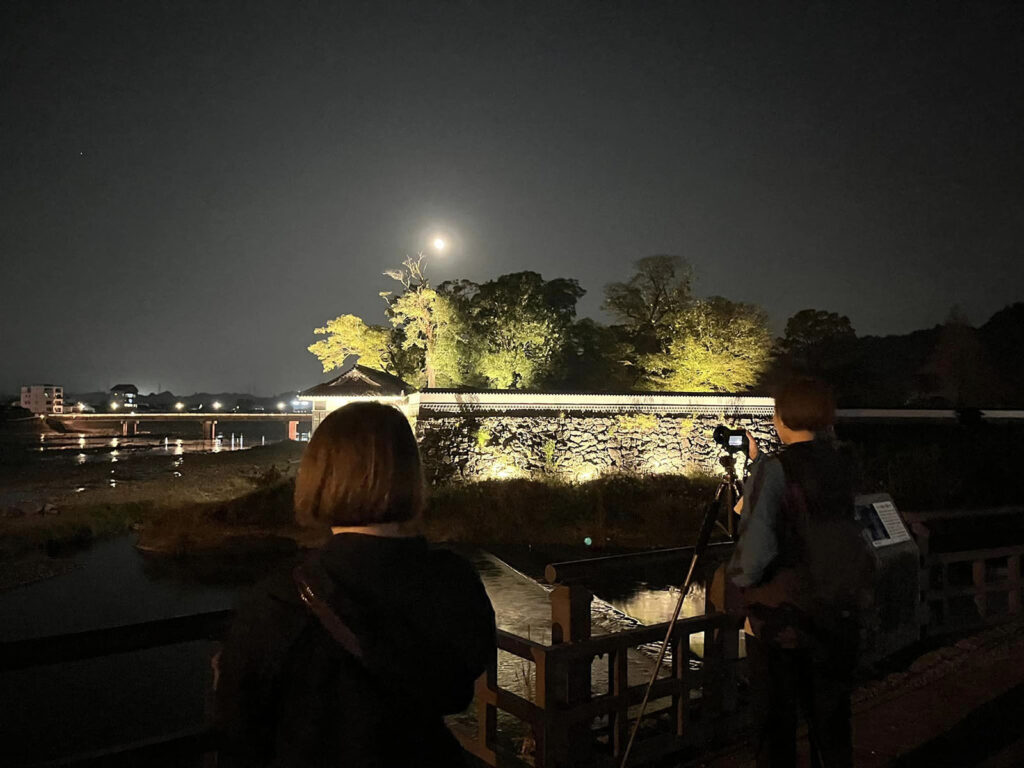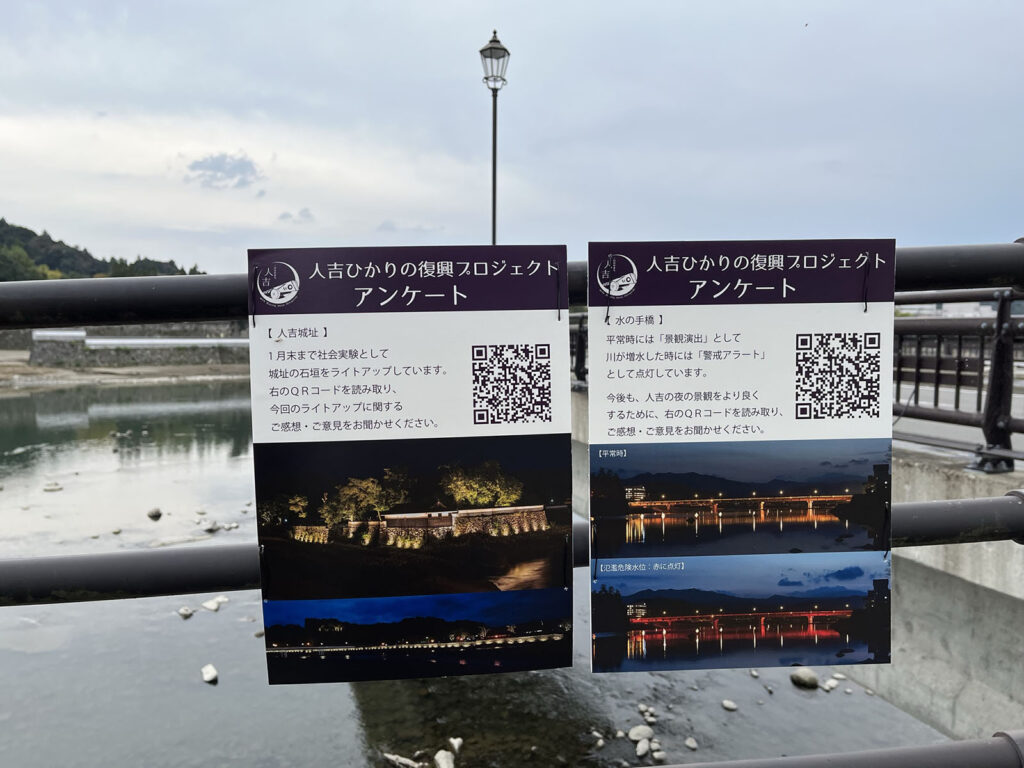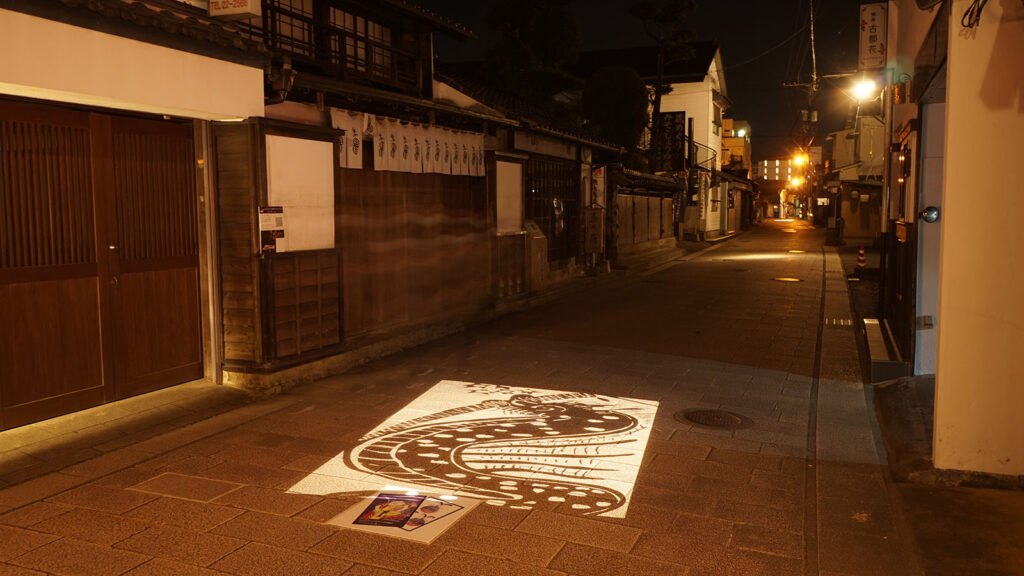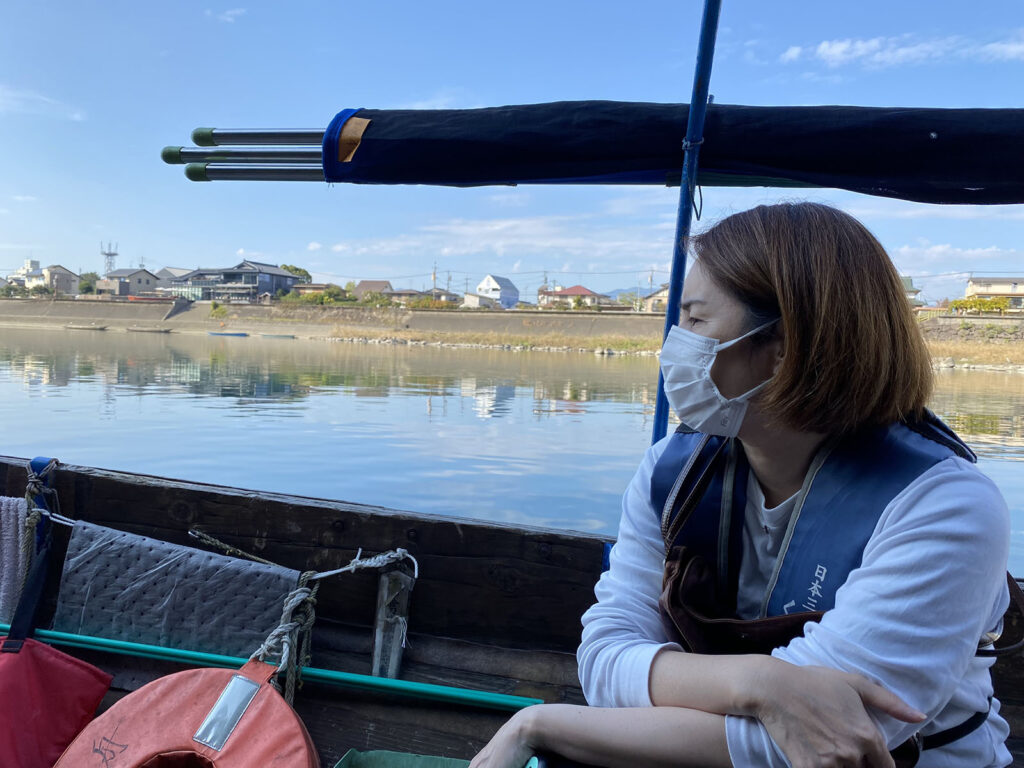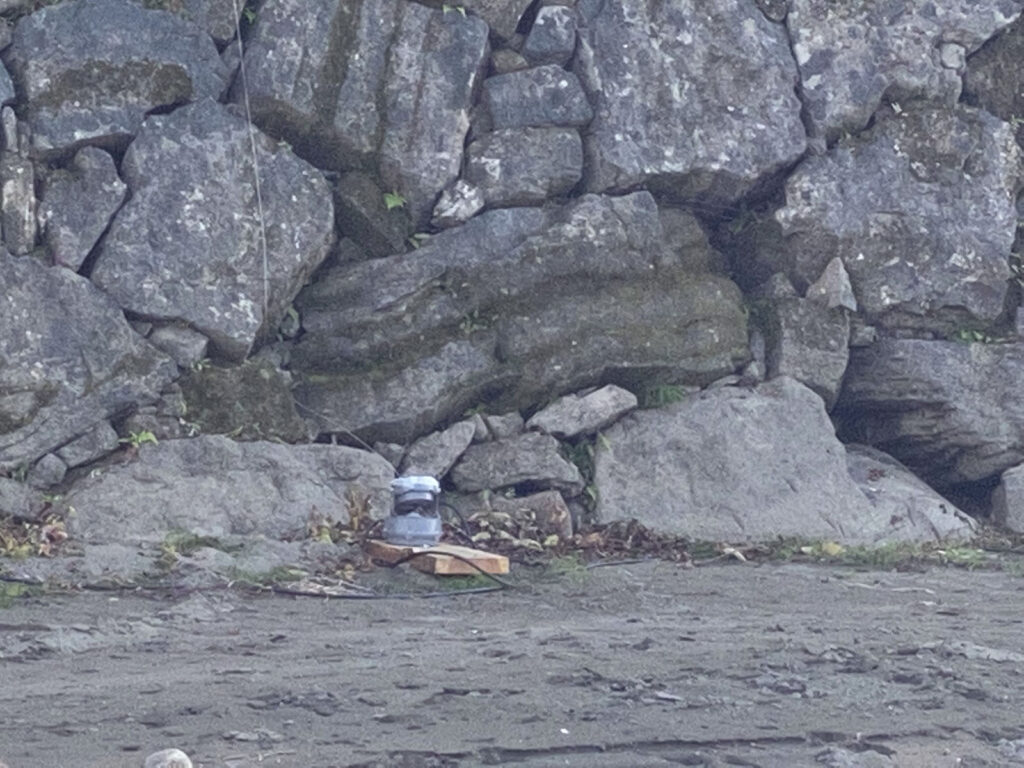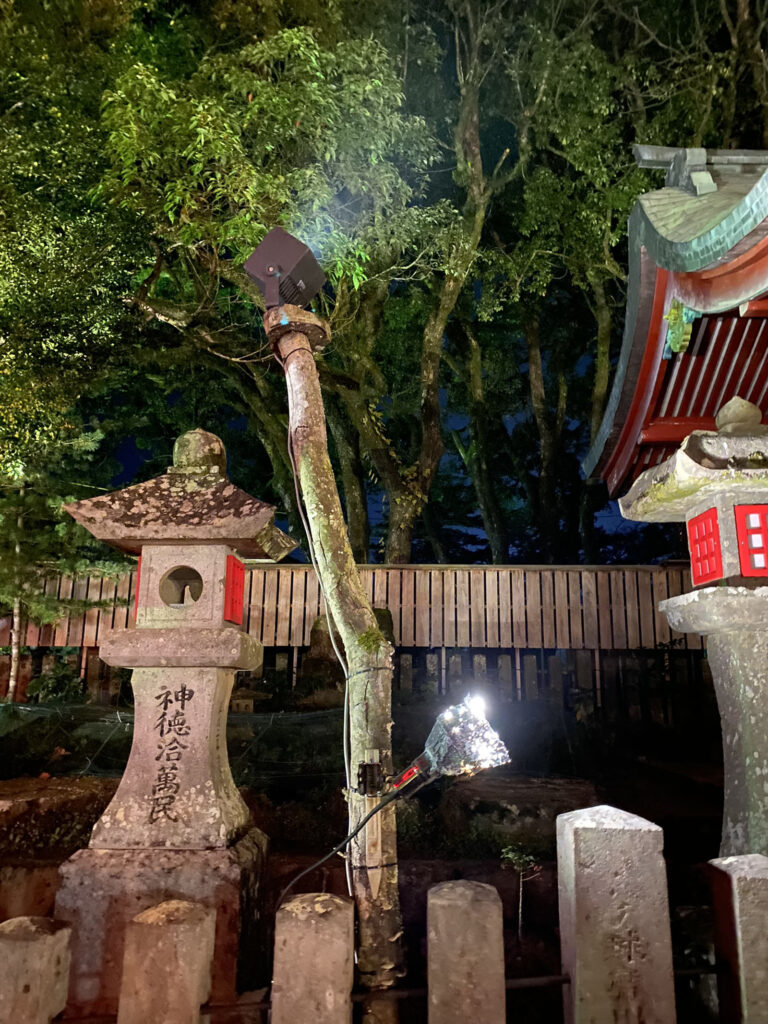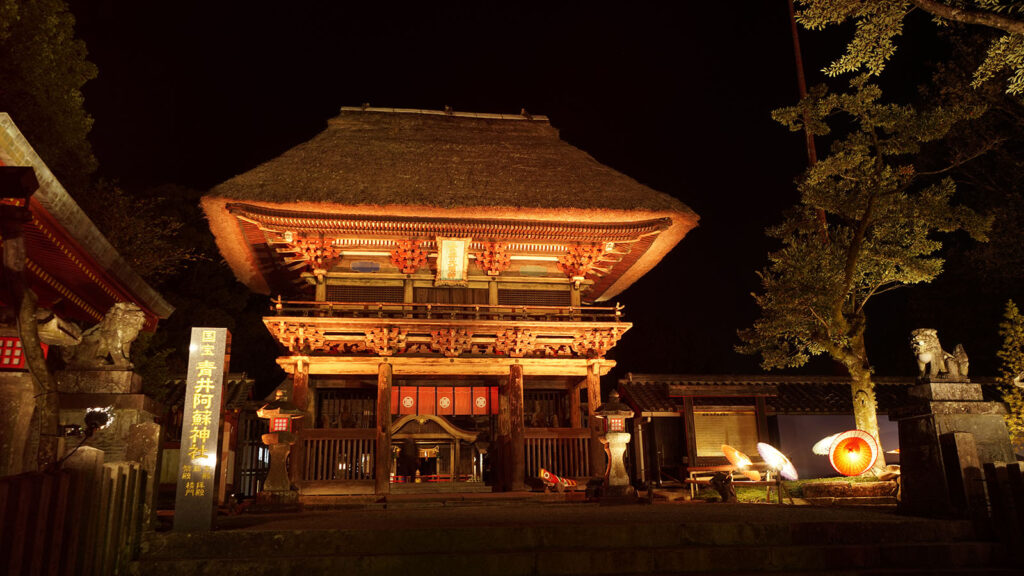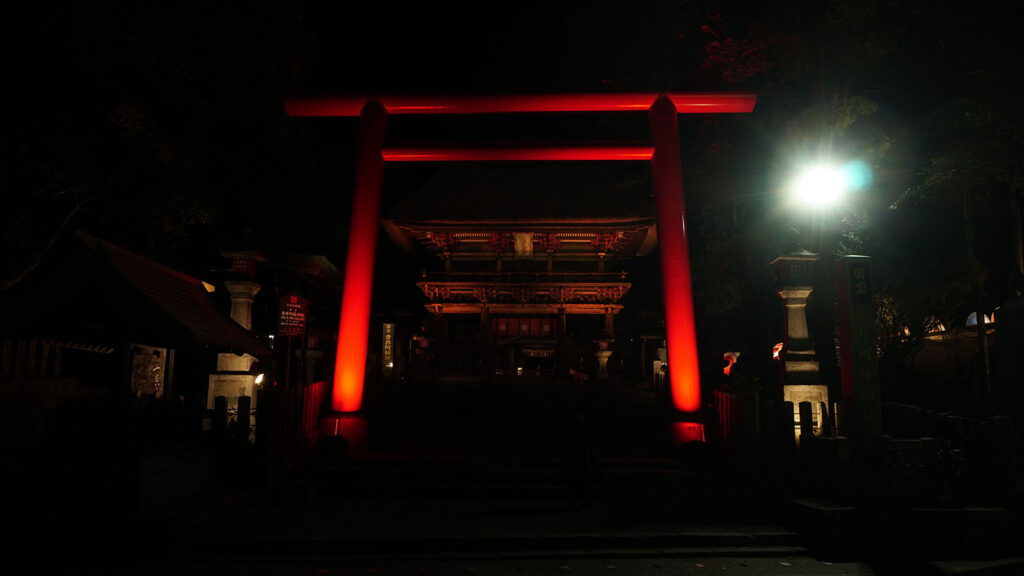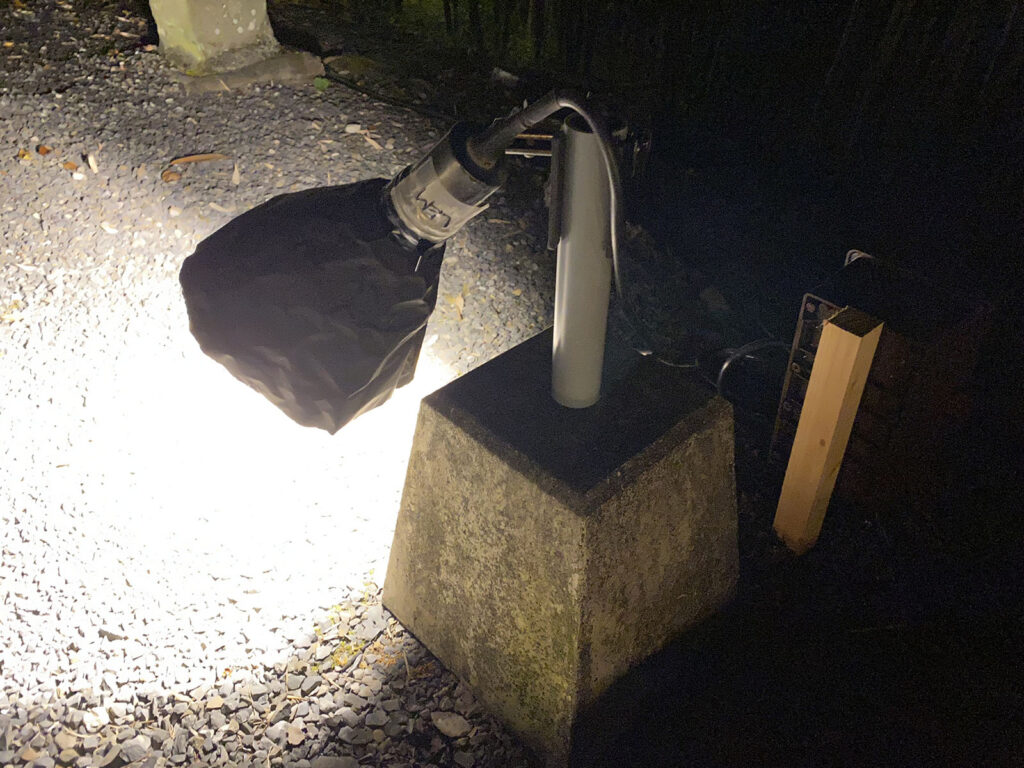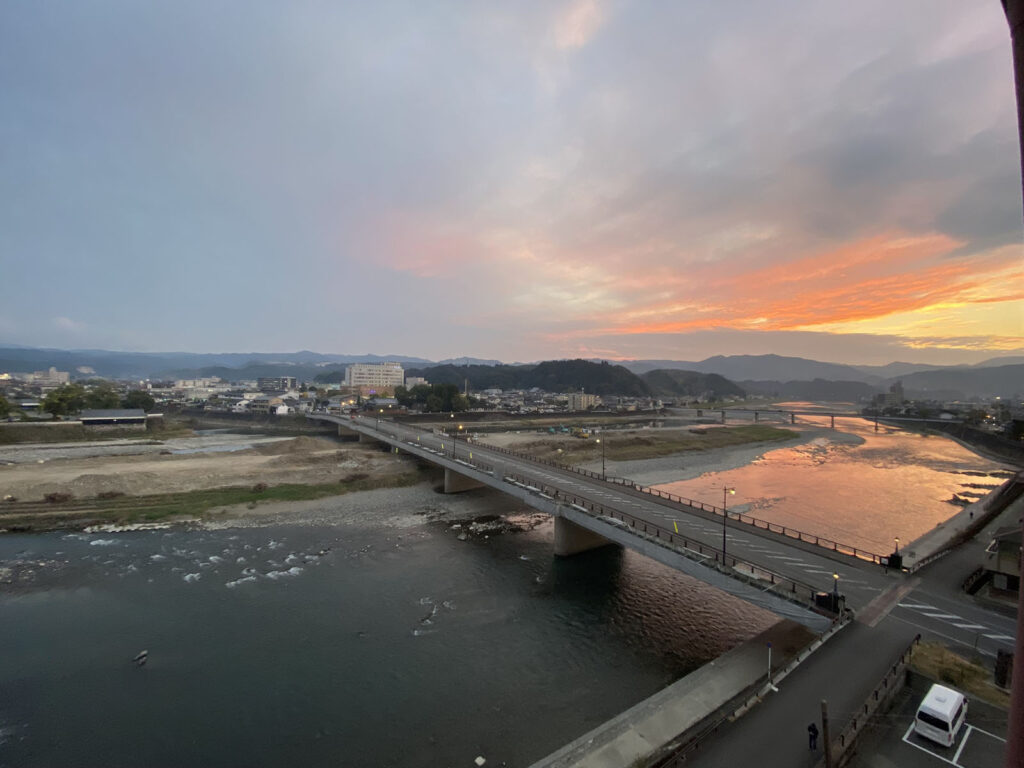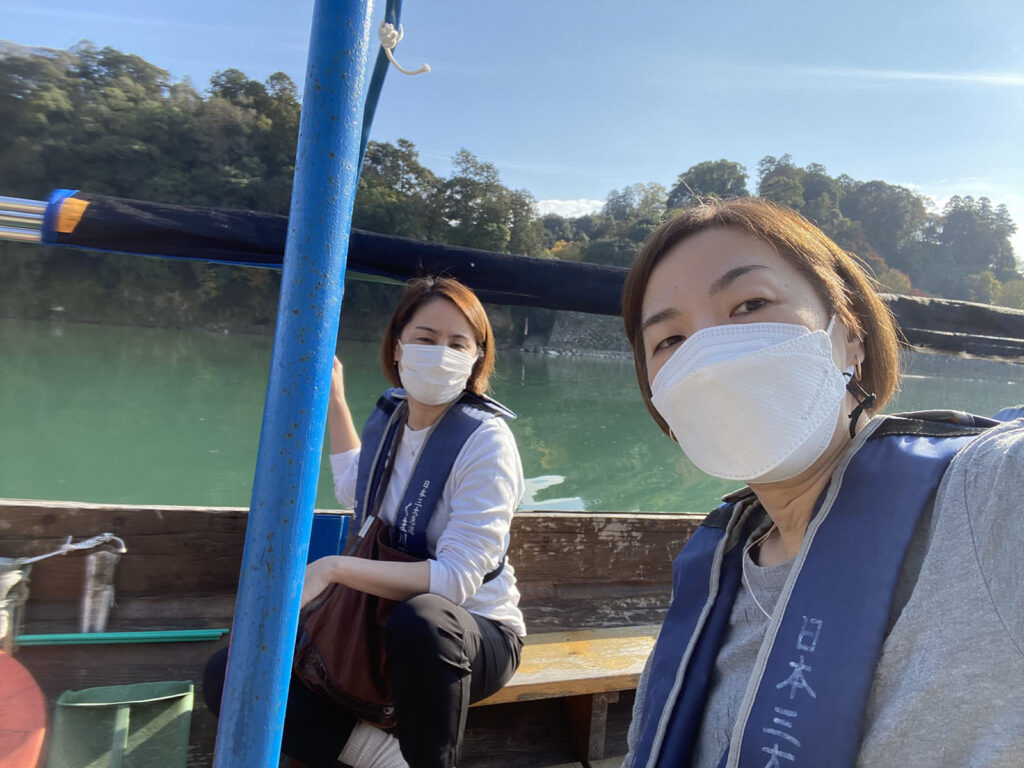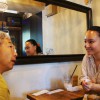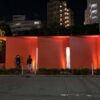2022.11.10-12 Mari Kubota + Noriko Higashi

In July 2020, Hitoyoshi City in Kumamoto Prefecture was devastated by catastrophic flooding caused by heavy rainfall. Since the disaster, the city has made steady efforts toward recovery— efforts in which lighting has played a significant role. To understand how lighting has contributed to the city’s revitalization, we conducted interviews with local stakeholders, including hot spring inn owners and city officials, and followed up with an on-site investigation of the actual lighting projects.
From July 3 to 4, 2020, torrential rains caused the Kuma River to overflow, resulting in catastrophic flooding in Hitoyoshi City, Kumamoto Prefecture. Known for its scenic beauty, hot springs, and hospitality centered around local shochu, this tourism-driven city suffered devastating damage—not only from the flooding but also from the impact of the COVID-19 pandemic. In response to the disaster, a local inn owner launched the Hitoyoshi Hikari no Fukkō Project (Hitoyoshi Light Recovery Project), using light as a tool for recovery. In 2021, Hitoyoshi was selected as a model city for Japan’s Cabinet Office-led Super City (SC) initiative, proposing a future-oriented recovery plan. This plan placed lighting as a key component, aiming to promote both disaster resilience and tourism attraction through thoughtful illumination. This survey included interviews with stakeholders such as hot spring inn owners, city officials, and lighting designers involved in the project, examining how “light” became a central theme in the recovery process and evaluating the impact it has had.
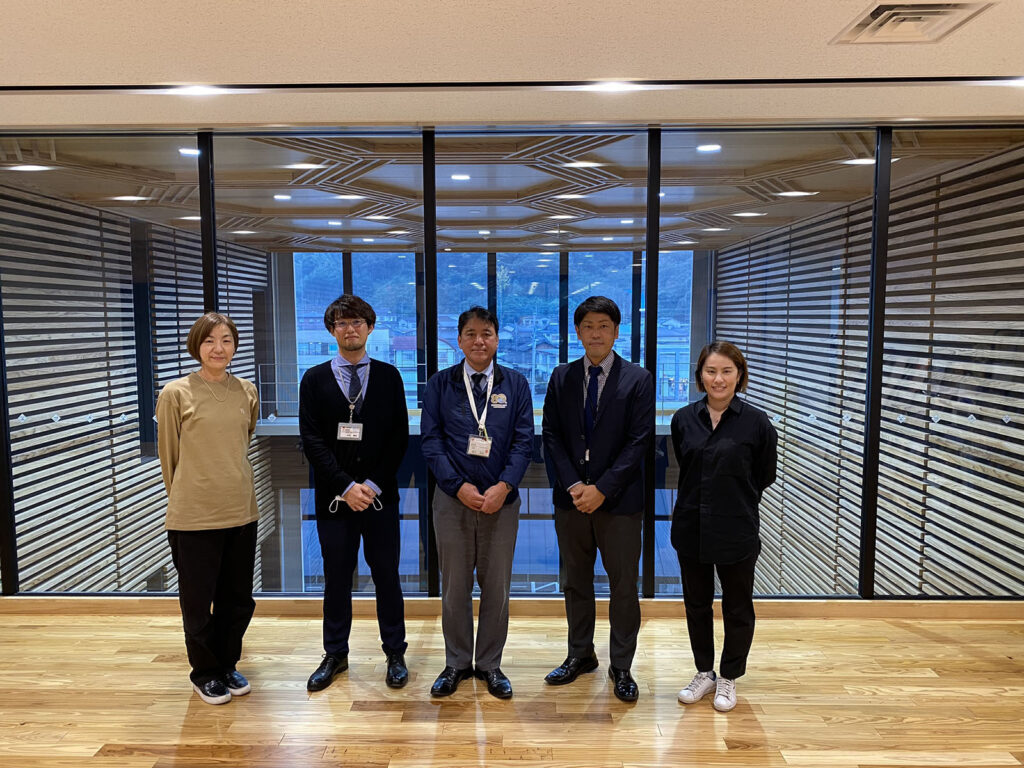
■Hitoyoshi City’s Recovery Initiatives
To better understand Hitoyoshi’s post-disaster recovery efforts, we visited the Hitoyoshi City Office and spoke with Mr. Koji Tahara and Mr. Kenya Nakamura of the Reconstruction Policy Department, as well as Mr. Naoya Mizoguchi, Director of the Economic Affairs Department. Hitoyoshi City has been working toward designation as a National Strategic Special Zone under the Cabinet Office’s “Super City” initiative, which promotes the use of advanced IT technologies in urban development. Through its “Hitoyoshi Super City (SC) Concept”, the city aims to build resilience against flooding while simultaneously revitalizing its appeal as a tourist destination. This “future-oriented recovery” is built on two pillars: defense and offense. On the defense side, comprehensive flood mitigation strategies are being pursued. On the offense side, efforts focus on fostering vibrancy along the Kuma River, a central element of local life. Lighting plays a critical role in both areas. Functionally (defense), lighting is used as an early warning system that alerts residents to rising water levels. For example, a newly implemented bridge alert system illuminates the bridge in red when the river reaches a dangerous level, warning nearby residents as well as those monitoring river conditions via disaster-prevention cameras. Aesthetically (offense), the bridge is normally bathed in warm-colored light, contributing to the atmospheric nightscape alongside the illuminated stone walls of the adjacent Hitoyoshi Castle ruins. This innovative bridge alert system
has garnered attention beyond the city—media coverage and direct inquiries from other municipalities highlight its potential as a model. Looking ahead, there are hopes to expand this concept to other parts of the city’s lighting infrastructure, such as submerged streetlights, integrating safety and ambiance into Hitoyoshi’s broader urban design.
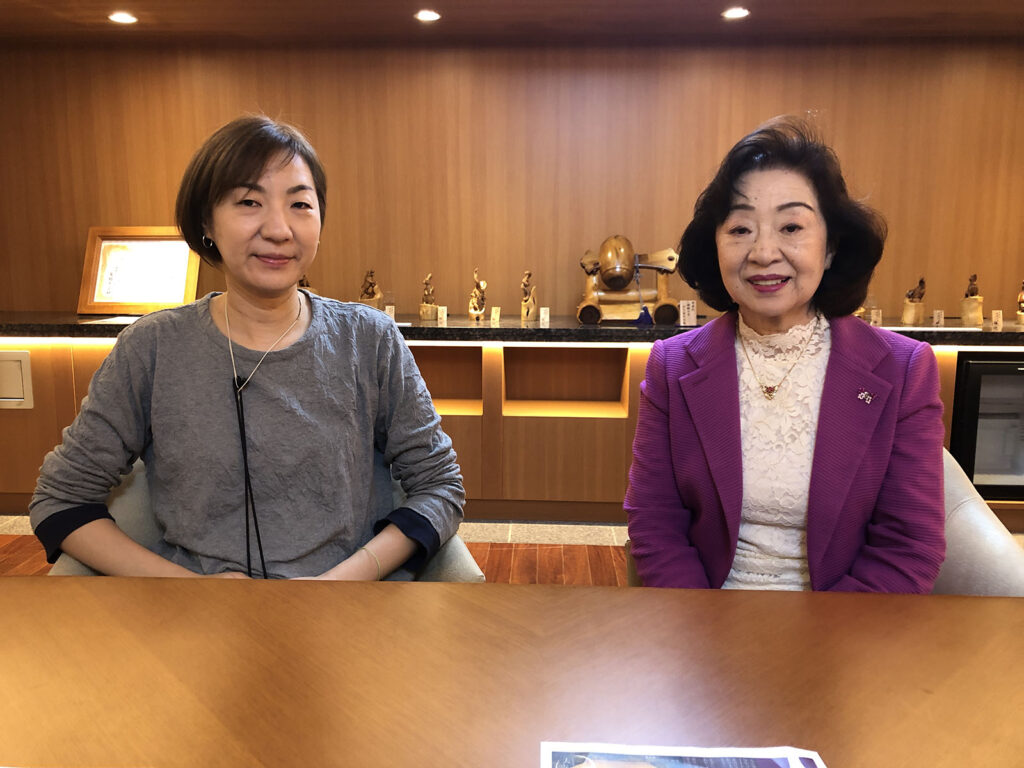
■Hitoyoshi Hikari no Fukkō Project (Light for Recovery Project)
We also spoke with Mr. Mitsuhiro Arimura, the president of Ayunosato, a traditional hot spring inn, and his wife Mrs. Masayo, the proprietress—initiators of the concept of post-disaster recovery through lighting.
When the Kuma River flooded, Ayunosato itself was inundated up to the second floor. That day, more than 100 guests were staying at the inn, watching the raging river from the windows. Masayo quickly led the guests to the upper floors, successfully guiding them to safety. The river overflowed in the early afternoon, and soon after, the power went out. That night, over 100 people spent a long, anxious evening in complete darkness inside the inn. The next morning, the guests were safely evacuated via chartered bus to Kumamoto. What remained was a devastated lobby, waterlogged furniture, and ruined tableware. The city was silent—void of light, people, or activity, save for the overwhelming evidence of the flood’s destructive force. In the face of this devastation, the local association of inn proprietresses, Sakura-kai, sprang into action. Determined not just to recover but to achieve a “creative reconstruction,” they began rebuilding efforts immediately. Though some inns considered shutting down or relocating, most chose to rebuild in place, helping one another along the way. As part of these efforts, President Arimura, seeking to transform the town into a more vibrant and attractive hot spring destination, traveled across Japan for inspiration. Hearing of the celebrated lighting in Yamaguchi’s Nagato Onsen, he visited the site and was deeply moved by the design that highlighted the town’s character. He personally reached out to lighting designer Shiho Nagamachi, who had overseen the Nagato project, and invited her to Hitoyoshi—thus sparking the Hitoyoshi Hikari no Fukkō Project. Hitoyoshi is home to 27 shochu(Japanese spirit) distilleries, making it a paradise for fans of Japan’s traditional spirit, and has a vibrant dining scene with a remarkably high number of restaurants per capita. It’s ideal for an evening stroll, but the absence of lighting at night had become a major obstacle. Moreover, Hitoyoshi is a historical hidden village with a legacy of 700 years under the Sagara clan—its rich history and culture offer experiences unique to the town. What remains is the challenge of how to thoughtfully illuminate this city, not only to restore what was lost but to create a renewed, inviting, and safe nightscape that reflects its cultural depth.
Hitoyoshi is also a treasure trove of cultural heritage, reportedly home to 90% of all cultural properties in Kumamoto Prefecture. The city is dotted with numerous shrines and temples, some of which feature thatched roofs—a rarity among Japan’s religious structures. Until recently, these historical sites were left completely unlit at night, and there had never been a concept of visiting them after dark. As part of the Hitoyoshi Hikari no Fukkō Project, a series of social lighting experiments were conducted to illuminate some of these cultural assets. Surveys collected during the trials showed generally positive feedback, with some locals even expressing a desire to have lighting installed at their own sites. In one instance, after the lighting from a trial was removed, community members requested that it be restored, and the illumination was subsequently made permanent. This stands as a compelling example of how lighting can reveal the hidden charm of nighttime landscapes—charm that had gone unnoticed when everything remained in darkness.
Through these lighting experiments, the project not only enhanced the nightscape but also sparked local pride and engagement with the city’s cultural treasures.
In the second year of the social lighting experiment, the number of illuminated sites was increased, and once again, the project received high praise from the community. The lighting helped residents rediscover and reappreciate the value of their cultural heritage. Beyond simply lighting up various landmarks, guided night tours connecting these illuminated spots were also organized—turning the lighting into a catalyst not only for revitalization, but also for creating new tourism content. Light has become a driving force behind Hitoyoshi’s recovery.
We also spoke with one of the key figures in this recovery initiative: Mr. Kazuhiro Nakamura, a board member of the Hitoyoshi Onsen Tourism Association. Mr. Nakamura, who is heavily involved in the operational side of the project, shared his observations: even after the devastating flood of the Kuma River, not a single resident spoke ill of the river. Instead, he felt a strong sense of pride and reverence for it—proof, he said, that the people of Hitoyoshi are truly a “river people.” This deep affection for the river continues to be a powerful source of energy propelling the community’s recovery forward. In conversations with locals, Mr. Nakamura came to believe that merely restoring the city to its pre-disaster state would not be enough to bring tourists back. He felt that lighting had strong potential as a means of revitalization—it’s cost-effective to operate, can change with the seasons to offer variety, and encourages repeat visitors. While Hitoyoshi is known for its vibrant nightlife, particularly its bar district, that appeal primarily attracts male tourists.
Creating beautiful nighttime scenery, he noted, has the power to draw in female tourists and families as well. He also discussed the challenges ahead: lighting should not be limited to key tourist spots—it must be implemented in a way that involves local residents, ensuring that the entire town benefits and feels a sense of ownership. Monetization and budget allocation are also key to sustaining the project, as it requires ongoing investment. Ultimately, what enables the Hikari no Fukkō Project to succeed is not only a passionate vision for the town’s future, but the presence of individuals willing to support and realize it behind the scenes. Looking forward, the continuation of this project will depend on both funding and collaborative local engagement. But as long as the people of Hitoyoshi remain united in their love for the Kuma River and maintain interest in shaping their town’s future, there’s no doubt that efforts toward a more attractive and resilient city will continue to gain momentum.
■Conclusion
In times of disaster recovery, many professionals find themselves asking: “What can I contribute through my own expertise?” This is a question that likely arises for anyone who has witnessed the aftermath of a disaster. At LPA, it was a central concern during the Great East Japan Earthquake in 2011—and it remains a guiding question today. According to the senior proprietress of Ayu no Sato, many residents of Hitoyoshi likely felt a deep sense of relief when the lights of their revived hot spring inns began to shine once more. The emergence of light after darkness becomes a symbolic beacon—an ember of hope that inspires people to push forward. Just a single light in the darkness can shine with an overwhelming sense of brightness and strength. There is something deeply instructive in this for all of us. As Hitoyoshi moves ahead, the city will undoubtedly continue seeking the guidance of various specialists while striving to become a truly one-of-a-kind place. The efforts to rebuild its physical and emotional landscape—through both hard infrastructure and soft cultural experiences—are poised to make Hitoyoshi not only resilient but exceptional. The coming years hold immense promise for what this remarkable town can become. (Noriko Higashi)
Hitoyoshi Hikari no Fukkō Project
In post-disaster recovery, the immediate focus is naturally placed on rebuilding infrastructure and ensuring the safety and wellbeing of the local population. However, one could say that illuminating a town with light that goes beyond necessity—lighting that brings out its charm and beauty—also plays a crucial role in emotional and psychological recovery.
The “Hikari no Fukkō Project”, which aims to restore the lights lost in the wake of the devastating 2020 flood and to enhance the town’s appeal through illumination, began with a small-scale lighting experiment. Since that initial phase, the project has gradually expanded, increasing the number of permanent installations. In Hitoyoshi, many of the town’s landmarks—such as the stone walls of the Hitoyoshi Castle ruins along the Kuma River, or thatched-roof shrines like Aoi Aso Shrine and Oikami Shrine—are located within walking or cycling distance. These treasured places, long loved by the community, are now being gently lit, revealing a nightscape that had previously been hidden in darkness. This project is not one driven by ample funding, resources, or ideal construction conditions. Its ongoing success is the result of passionate efforts by local residents and lighting professionals, who continue to push it forward despite various challenges. During this visit, we toured the actual lighting sites both during the day and at night. Even under these constrained circumstances, we could clearly see how thoughtfully and carefully each installation had been designed to suit the character of each location. The lighting reflects a deep respect for the town’s heritage and a sincere desire to bring it back to life.

■Mizunote Bridge with Disaster Alert Lighting
The bridge is illuminated by RGB floodlights from four locations—upstream and downstream, on both banks of the river—and is linked to water level data. In the past decade, many landmarks have adopted RGB lighting fixtures to create color-changing illuminations. These “colors of light” are increasingly being used not only to express seasons and times of day, but also to convey various types of information. Additionally, the handrail lighting on the pedestrian side creates a pleasant walking space. Upon closer inspection, however, it seems that many insects are attracted to the lights—perhaps unsurprisingly, given the riverside location.
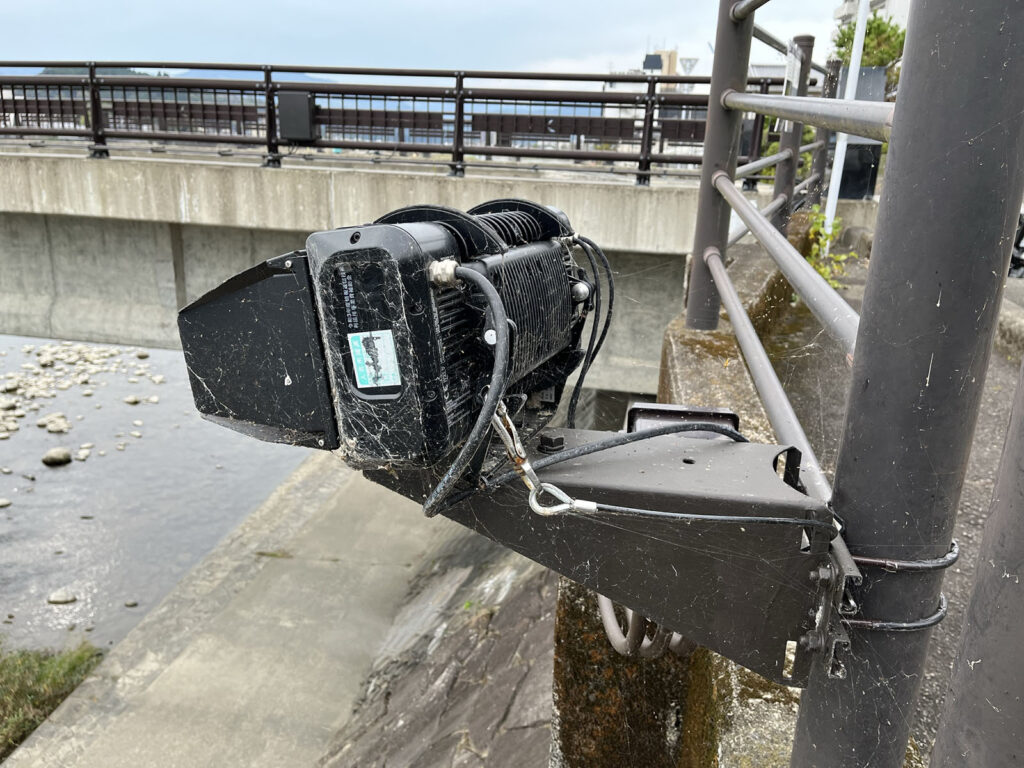
■Kajiyamachi Street to Konyahonmachi Jukken Street
Along Kajiyamachi Street, paved with stone and lined with old buildings, shadow projections of Natsume’s Book of Friends and Unsun Karuta, both locally connected, create a nighttime attraction. On the adjacent Konyahonmachi Jukken Street, a row of eateries is lit by matching, originally designed lanterns, enhancing the street’s sense of unity. This kind of lighting not only highlights landmarks but also distributes light throughout the area, aiming to increase walkability and nighttime exploration. From a lighting designer’s perspective, semi-temporary projects like this present challenges such as sourcing suitable fixtures, managing light distribution and glare, installation methods, wiring, and control systems. However, various creative solutions were evident, many of which were quite relatable and commendable.
The stone wall of the castle ruins is lit up and reflected in the Kuma River, creating a nightscape unique to Hitoyoshi. However, installing lighting fixtures in areas that may be submerged poses many challenges and remains a difficult issue. Permanent installation is currently under consideration.
■Aoi Aso Shrine
Commonly known as “Aoi-san,” Aoi Aso Shrine is a designated National Treasure. Its striking red torii gate is further highlighted with red LED lighting. Within the shrine grounds, the lighting fixtures are installed on “perch-style” poles—easy to work with and discreet—which was a particularly appealing detail. A must-have item, Blackwrap (a matte black aluminum foil-like material), is freely attached to the fixtures to narrow the light distribution or prevent glare.
■Iwaya Kumanoza Shrine
Located slightly away from the town center, Iwaya Kumanoza Shrine is one of the cultural properties that make up a Japan Heritage site. Perhaps because we visited at night, it carried an air of mystery. In the stillness, we ascended the approach path softly lit by gentle lights. At the top, the shrine building appeared, subtly illuminated in color by small fixtures. Deeper within lies a sacred cave, where sounds resembling the breath of living creatures emerged from the darkness, further enhancing the shrine’s spiritual atmosphere. I felt a sense of awe, almost as if I were being watched from within the shadows.
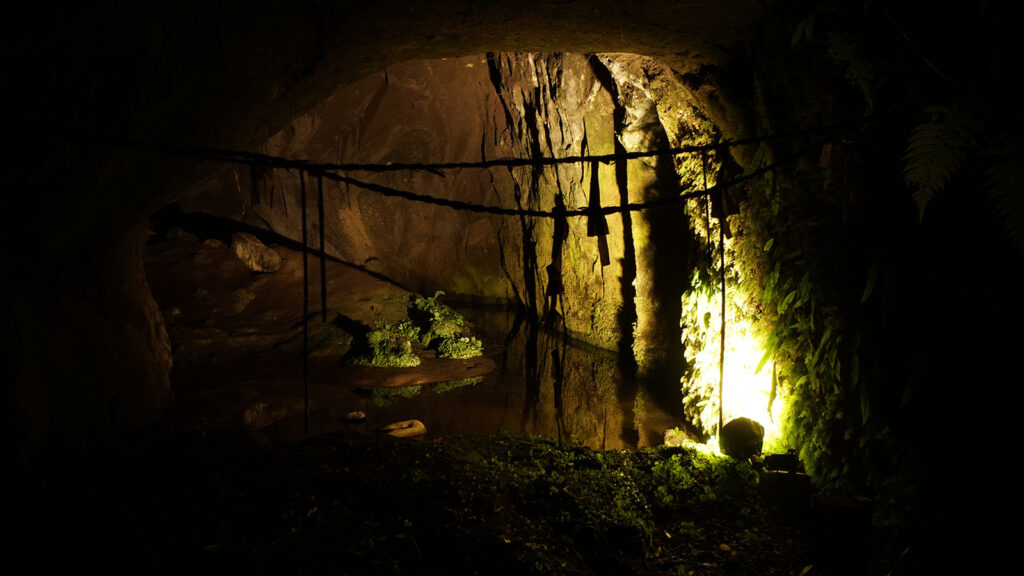
■In Closing
Unlike our usual “go where we’re curious and investigate freely” style, this time we took on the role of lighting detectives while listening to valuable insights from local people working hard on the ground, as well as lighting designer Ms. Shiho Nagamachi, who has been involved in the project. Lastly, I would like to express my sincere thanks to everyone who generously shared their time with us. I hope the lights of Hitoyoshi will continue to lead the way toward further creative recovery. (Mari Kubota)
